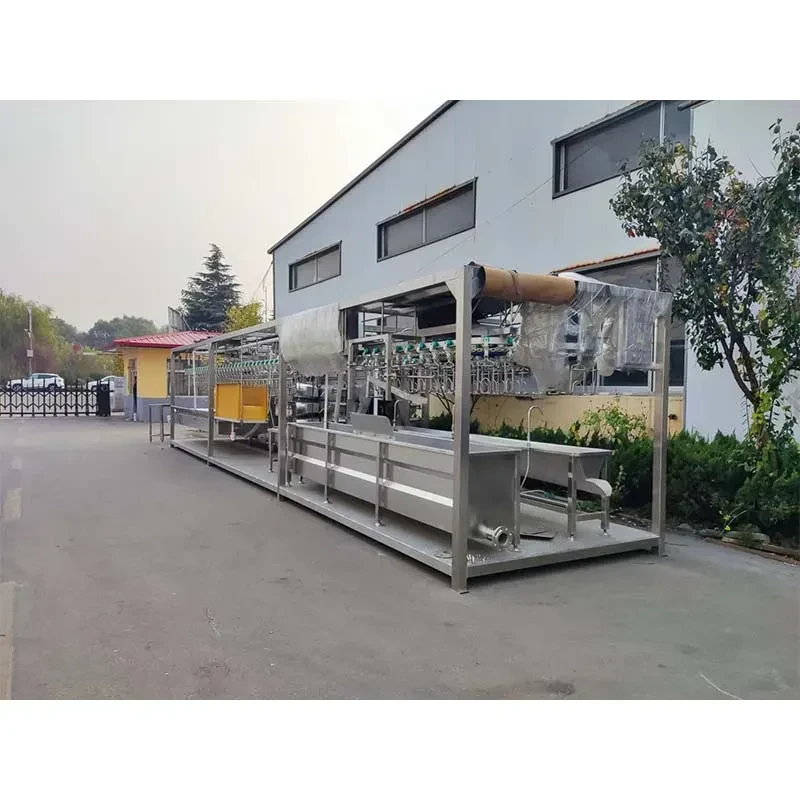evaporative cooling pads poultry house
Oct . 04, 2024 20:41 Back to list
evaporative cooling pads poultry house
The Importance of Evaporative Cooling Pads in Poultry Houses
Maintaining optimal temperature and humidity levels in poultry houses is crucial for the health and productivity of the birds. One of the most effective and energy-efficient methods for achieving this is through the use of evaporative cooling pads. These pads play a significant role in keeping poultry houses cool, particularly in regions with high ambient temperatures. This article explores the functionality, benefits, and best practices for using evaporative cooling pads in poultry houses.
How Evaporative Cooling Pads Work
Evaporative cooling is a natural process that leverages the cooling effects of water evaporation. The system typically consists of a fan, a water supply, and the cooling pads themselves, which are made from materials that absorb water readily. When hot air passes through these wet pads, the water evaporates, absorbing heat from the air and thereby cooling it down. The resulting cooler air is then circulated within the poultry house, creating a more comfortable environment for the birds.
This method is particularly effective in arid and semi-arid climates, where high temperatures can stress poultry, leading to decreased feed intake, lower weight gain, and reduced egg production. By using evaporative cooling pads, poultry farmers can mitigate these risks, ensuring a healthier flock and enhanced productivity.
Benefits of Using Evaporative Cooling Pads
1. Energy Efficiency Evaporative cooling systems consume significantly less energy compared to traditional air conditioning systems. This not only reduces operational costs but also promotes sustainable farming practices by lowering the carbon footprint.
2. Improved Air Quality Efficient air circulation and cooling help to reduce the buildup of ammonia and other harmful gases that can occur in poorly ventilated poultry houses. Maintaining good air quality is critical for the overall health of the birds.
3. Enhanced Bird Welfare Providing a cooler environment helps to reduce heat stress in poultry, which is vital for maintaining their health and well-being. With improved comfort, birds are likely to exhibit better growth rates and higher productivity levels.
4. Cost-Effectiveness Though the initial investment in evaporative cooling technology may be higher than basic ventilation systems, the long-term savings on energy costs and the potential increase in poultry production often justify the expense.
evaporative cooling pads poultry house

5. Simple Maintenance Cooling pads are generally easy to install and maintain. Regular cleaning and timely replacement of worn pads can ensure the system operates efficiently throughout the hot months.
Installation and Best Practices
To maximize the effectiveness of evaporative cooling pads, proper installation and maintenance are essential. Here are some best practices for poultry farmers
- Location and Design Ensure that the cooling pads are placed in a way that maximizes airflow. The pads should ideally be installed on the side of the building that receives the most breeze. Orienting the fans to blow cooled air into the house will also optimize performance.
- Water Quality Use clean, potable water when filling the cooling system to avoid clogging and scaling of the pads. Regularly check and maintain the water quality to ensure efficient operation.
- Regular Cleaning Clean the pads regularly to remove any dust or debris that may hinder the water absorption process. Dirty pads can significantly reduce cooling efficiency.
- Monitor Performance Regularly monitor temperature and humidity levels within the poultry house to ensure that the cooling system is operating effectively. Adjust fan speeds and water flow rates as needed based on environmental conditions.
- Seasonal Preparation Before the hot season begins, inspect the entire cooling system to identify potential issues. Replace worn-out pads and ensure that fans are working optimally to prevent unexpected breakdowns during peak heat.
Conclusion
Evaporative cooling pads are an essential component in modern poultry farming, particularly in areas prone to high temperatures. Not only do they provide a cost-effective and energy-efficient solution for temperature control, but they also significantly enhance the welfare of poultry. By following best practices for installation and maintenance, farmers can ensure that their flocks thrive, ultimately leading to increased production and profitability. Embracing such innovative solutions is key to sustaining the poultry industry in an era of climate variability and rising global temperatures.
-
Automatic Feeding Line System-Pan Feeder Nipple Drinker|Anping County Yize Metal Products Co., Ltd.
NewsJul.29,2025
-
Hot Sale 24 & 18 Door Rabbit Cages - Premium Breeding Solutions
NewsJul.25,2025
-
Automatic Feeding Line System Pan Feeder Nipple Drinker - Anping County Yize Metal Products Co., Ltd.
NewsJul.21,2025
-
Automatic Feeding Line System Pan Feeder Nipple Drinker - Anping County Yize Metal Products Co., Ltd.
NewsJul.21,2025
-
Automatic Feeding Line System - Anping Yize | Precision & Nipple
NewsJul.21,2025
-
Automatic Feeding Line System - Anping Yize | Precision & Nipple
NewsJul.21,2025






